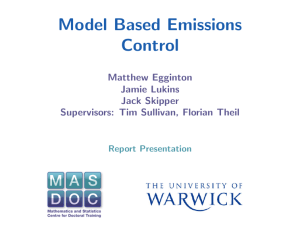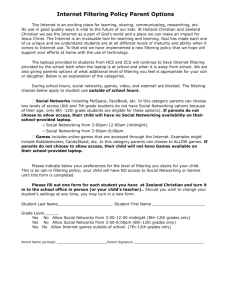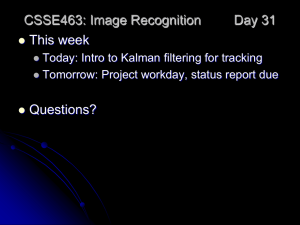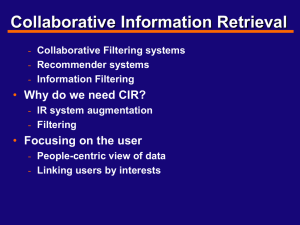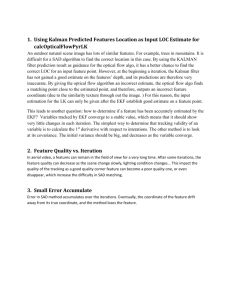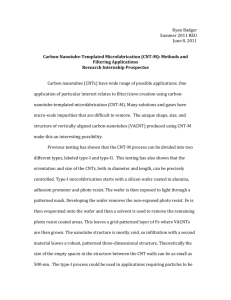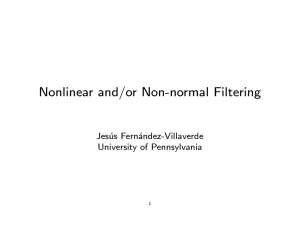ECE 684
advertisement
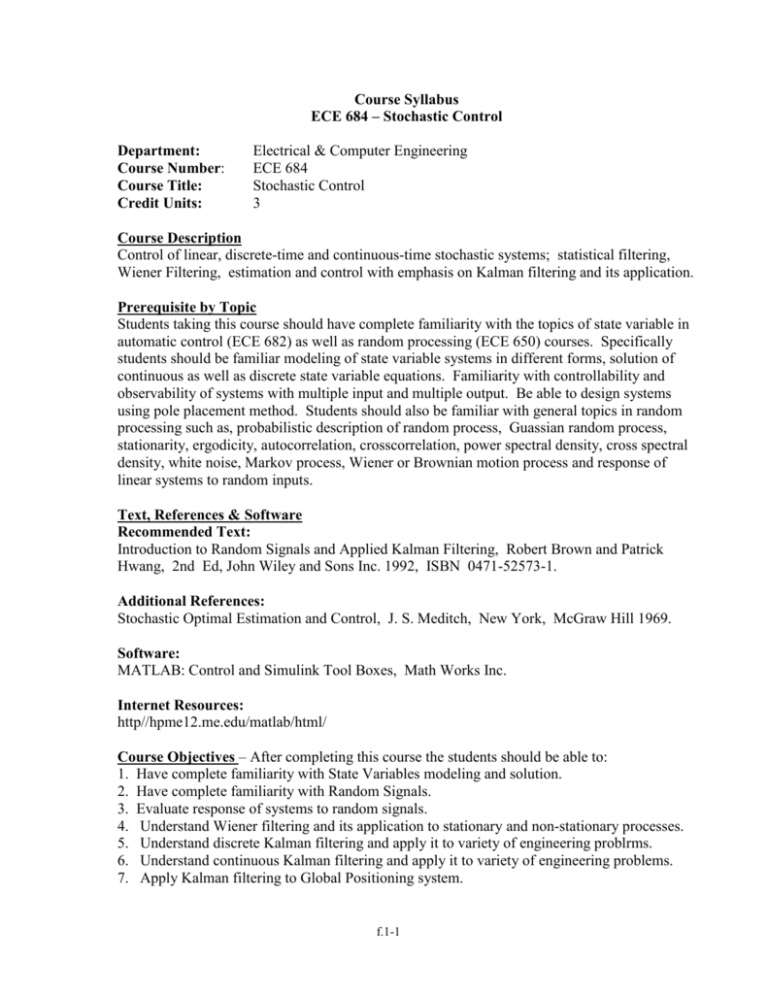
Course Syllabus ECE 684 – Stochastic Control Department: Course Number: Course Title: Credit Units: Electrical & Computer Engineering ECE 684 Stochastic Control 3 Course Description Control of linear, discrete-time and continuous-time stochastic systems; statistical filtering, Wiener Filtering, estimation and control with emphasis on Kalman filtering and its application. Prerequisite by Topic Students taking this course should have complete familiarity with the topics of state variable in automatic control (ECE 682) as well as random processing (ECE 650) courses. Specifically students should be familiar modeling of state variable systems in different forms, solution of continuous as well as discrete state variable equations. Familiarity with controllability and observability of systems with multiple input and multiple output. Be able to design systems using pole placement method. Students should also be familiar with general topics in random processing such as, probabilistic description of random process, Guassian random process, stationarity, ergodicity, autocorrelation, crosscorrelation, power spectral density, cross spectral density, white noise, Markov process, Wiener or Brownian motion process and response of linear systems to random inputs. Text, References & Software Recommended Text: Introduction to Random Signals and Applied Kalman Filtering, Robert Brown and Patrick Hwang, 2nd Ed, John Wiley and Sons Inc. 1992, ISBN 0471-52573-1. Additional References: Stochastic Optimal Estimation and Control, J. S. Meditch, New York, McGraw Hill 1969. Software: MATLAB: Control and Simulink Tool Boxes, Math Works Inc. Internet Resources: http//hpme12.me.edu/matlab/html/ Course Objectives – After completing this course the students should be able to: 1. Have complete familiarity with State Variables modeling and solution. 2. Have complete familiarity with Random Signals. 3. Evaluate response of systems to random signals. 4. Understand Wiener filtering and its application to stationary and non-stationary processes. 5. Understand discrete Kalman filtering and apply it to variety of engineering problrms. 6. Understand continuous Kalman filtering and apply it to variety of engineering problems. 7. Apply Kalman filtering to Global Positioning system. f.1-1 Topics Covered/Course Outline 1. Random Signals and Variables. 2. Correlation and Spectral Density. 3. Stationarity and Ergodicity. 4. Power Spectral Density. 5. Wiener and Brownian Motion. 6. Response of Linear Systems to Random Inputs. 7. Wiener Filtering. 8. The Discrete Kalman Filter. 9. The Continuous Kalman Filter. 10. Filter Stability in the Steady State Conditions. 11. Linearization. 12. Applied Inertial Navigational System. 13. Description of Global Positioning System 14. Kalman Filtering Applied to Global Positioning System. Relationship to Program Outcomes This supports the achievement of the following outcomes: a) Ability to apply knowledge of advanced principles to the analysis of electrical and computer engineering problems. b) Ability to apply knowledge of advanced techniques to the design of electrical and computer engineering systems. c) Ability to apply the appropriate industry practices, emerging technologies, state-ofthe-art design techniques, software tools, and research methods of solving electrical and computer engineering problems. d) Ability to use the appropriate state-of-the-art engineering references and resources, including IEEE research journals and industry publications, needed to find the best solutions to electrical and computer engineering problems. e) Ability to communicate clearly and use the appropriate medium, including written, oral, and electronic communication methods. f) Ability to maintain life-long learning and continue to be motivated to learn new subject. g) Ability to learn new subjects that are required to solve problems in industry without being dependent on a classroom environment. h) Ability to be competitive in the engineering job market or be admitted to an excellent Ph. D. program. Prepared by: Ali Amini January 16, 2003 f.1-2



